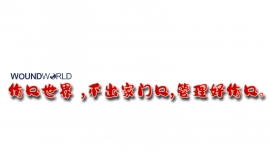文献精选
Tao Feng1†* , Hui Lu1†, Xiaoting Ye1†, Chaofan Nie1 , Jianhong Zhang1 , Luofeng Yu1 , Haoyu Jin1 , Peng Li1* and Wei Huang1,2,3
ABSTRACT Bacterial infections are grave threats to human health, particularly those caused by the most common Grampositive bacteria. The massive administration of broad-spectrum antibiotics to treat various bacterial infections has led to the evolution and spread of drug resistance. As a universal antimicrobial technique unapt to induce drug resistance, photothermal therapy (PTT) is attracting extensive attention in recent years. However, its unspecific killing capability and side effects towards adjacent mammalian cells severely impede the practical applications. Herein, we proposed a metabolic engineering strategy to selectively inactivate Gram-positive bacteria by PTT. A bioorthogonal photothermal agent was prepared by the conjugation of IR-780 iodide and dibenzocyclooctyne (IR780-DBCO). Upon pre-metabolizing with 3-azido-D-alanine, Gram-positive bacteria rather than Gramnegative ones, such as Staphylococcus aureus and vancomycinresistant Enterococcus faecalis (VRE), could be specifically tied up by the explosive IR780-DBCO via copper-free click chemistry. Thereafter, they spontaneously detonated under 15 min near-infrared light irradiation and inactivated nearly 100% Gram-positive bacteria in vitro. Moreover, superbug VRE-induced infection was significantly inhibited by this approach in a mouse skin wound model. This metabolic labelling-based photothermal ablation strategy specific to Gram-positive microbes would stimulate the development of precise antibacterial candidates for preclinical applications.
Keywords: Gram-positive bacteria, selective inactivation, photothermal agent, metabolic labelling, wound infection
1 Frontiers Science Center for Flexible Electronics (FSCFE), Xi’an Institute of Flexible Electronics (IFE), Xi’an Institute of Biomedical Materials and Engineering (IBME), Ningbo Institute & Chongqing Technology Innovation Center, Northwestern Polytechnical University (NPU), Xi’an 710072, China
2 Key Laboratory of Flexible Electronics (KLOFE) & Institute of Advanced Materials (IAM), Nanjing Tech University (NanjingTech), Nanjing 211816, China
3 Key Laboratory for Organic Electronics and Information Displays & Institute of Advanced Materials (IAM), Nanjing University of Posts and Telecommunications, Nanjing 210023, China † These authors contributed equally to this work.
* Corresponding authors: (emails: 该Email地址已收到反垃圾邮件插件保护。要显示它您需要在浏览器中启用JavaScript。 (Li P); 该Email地址已收到反垃圾邮件插件保护。要显示它您需要在浏览器中启用JavaScript。 (Feng T))
Suyuan Li1* , Haiyan Xia2 , Yanpeng Liu3 , Cheng Cao1 , Siyang Li1 , Xiaojun Wang1 , Na Tian1 , Lixia Liu2 , Pengfei Lu4* , Changyun Quan2* , Junhua Luo1 and Shanglong Peng3*
ABSTRACT In clinical applications, disposable strip glucose sensors can monitor and maintain daily glucose levels for diabetes to prevent and avoid life-threatening complications.
In this paper, gram-scale Cu@CuO was synthesized via a controlled in-situ oxidation process of commercial Cu at room temperature. As a catalytic material for glucose electrooxidation in sensors, Cu@CuO is screen-printed onto silver-carbon working/counter electrodes. The obtained electrodes exhibit enhanced electrocatalytic behaviors for glucose oxidation, including a low limit of detection (1.3 μmol L−1) with a corresponding linear range (0.0013–2.5 mmol L−1), good selectivity, repeatability (20 electrodes with 4.28% relative standard deviation), high sensitivity (0.03 μA mmol−1 L cm−2), as well as air storage stability for more than three weeks. Calculation results show that the Cu component can not only increase the electronic conductivity, but also enhance the glucose adsorption ability of Cu@CuO, leading to a promoted kinetics in the Faraday process. More significantly, the large-scale preparation and wide applications in clinical electrodes make Cu@CuO a considerable and sustainable improvement for non-enzymatic glucose sensing applications.
Keywords: electrochemical sensor, Cu@CuO, glucose detection, screen-printing technique, room temperature
1 Institute of New Energy, Hexi University, Zhangye 734000, China
2 Cofoe Medical Technology Co., Ltd, Changsha 410000, China
3 School of Materials and Energy, Lanzhou University, Lanzhou 730000, China
4 School of Chemistry and Chemical Engineering, Suzhou University, Suzhou 234000, China
* Corresponding authors (emails: 该Email地址已收到反垃圾邮件插件保护。要显示它您需要在浏览器中启用JavaScript。 (Li S); 该Email地址已收到反垃圾邮件插件保护。要显示它您需要在浏览器中启用JavaScript。 (Lu P); 该Email地址已收到反垃圾邮件插件保护。要显示它您需要在浏览器中启用JavaScript。 (Quan C); 该Email地址已收到反垃圾邮件插件保护。要显示它您需要在浏览器中启用JavaScript。 (Peng S))
Zhuangzhuang Zhang1,2, Yajie Zhang2* , Yuanshan Liu1,2, Penghui Zheng2 , Tong Gao2 , Bingqing Luo1,2, Xingzhu Liu2 , Fanshu Ma2 , Jine Wang1,2* and Renjun Pei1,2*
ABSTRACT As a type of wound dressings, adhesive hydrogel dressings have been studied widely. However, due to the problems of moisture loss and secondary damage during dressing changes, the clinical application of adhesive hydrogel dressing remains a significant challenge. Herein, we developed a water-retaining and separable adhesive hydrogel wound dressing composed of methacrylated silk fibroin (SFMA), tannic acid (TA), and urethane diacrylate (UDA). The addition of TA with an abundance of catechol groups endowed the hydrogel with improved mechanical properties, good tissue adhesion and hemostasis abilities. Then, a hydrophobic polyurethane diacrylate (PUA) coating encapsulated the hydrogel by UDA polymerization, which could maintain the long-lasting high water content of the hydrogel. Furthermore, due to the adhesion energy being higher than the fracture energy of the hydrogel, it could be separated upon peeling. Finally, the animal experiments indicated that this adhesive hemostatic hydrogel could increase wound healing efficiency by maintaining long-lasting moist environment and being changed without secondary damage. These results showed that the multifunctional hydrogel might be a promising wound dressing for clinical application.
Keywords: adhesive hydrogel, water retention, separability, no secondary damage, wound dressing
1 School of Nano-Tech and Nano-Bionics, University of Science and Technology of China, Hefei 230026, China
2 CAS Key Laboratory for Nano-Bio Interface, Division of Nanobiomedicine, Suzhou Institute of Nano-Tech and Nano-Bionics, Chinese Academy of Sciences, Suzhou 215123, China
* Corresponding authors (emails: 该Email地址已收到反垃圾邮件插件保护。要显示它您需要在浏览器中启用JavaScript。 (Pei R); 该Email地址已收到反垃圾邮件插件保护。要显示它您需要在浏览器中启用JavaScript。 (Zhang Y); 该Email地址已收到反垃圾邮件插件保护。要显示它您需要在浏览器中启用JavaScript。 (Wang J))
Lin Guan1 , Xiaolan Ou2 , Ze Wang1 , Xingchen Li1 , Yubin Feng1 , Xinting Yang1 , Wenrui Qu2* , Bai Yang1 and Quan Lin1*
ABSTRACT Diabetic wounds are hard-healing chronic
wounds, mainly caused by wound infection, excessive inflammation, diabetic neuropathy, and peripheral vascular disease. Hence, comprehensive improvement of diabetic wound healing is of great significance in clinical practice. However, the current research on diabetic wounds mainly focuses on wound infection and angiogenesis, lacking the exploration of neuroregeneration and immunomodulation. In this study, we develop a multifunctional conductive hydrogel (PACPH) based on polydopamine-modified silver nanoparticles (AgNPs@PDA), cellulose nanocrystals (CNC)/polypyrrole (PPy) composites, and polyvinyl alcohol as an efficient wound dressing. The PACPH scaffold features multiple functions, including desirable mechanical properties, tissue adhesion, conductivity, and broad-spectrum antibacterial activity. Inspired by the endogenous electric field, the strategy of combining hydrogel with electrical stimulation (ES) is also proposed to accelerate the healing of diabetic wounds. Notably, the participation of ES can effectively promote nerve repair, realize the polarization of macrophages toward the M2 phenotype, and rapid angiogenesis, comprehensively improving the healing of diabetic wounds. This advanced collaborative strategy opens a new avenue in treating diabetic wound.
Keywords: chronic diabetic wound, conductive hydrogel, electrical stimulation, wound dressing, neuroregeneration
1 State Key Laboratory of Supramolecular Structure and Materials, College of Chemistry, Jilin University, Changchun 130000, China
2 Department of Hand Surgery, The Second Hospital of Jilin University, Changchun 130041, China
* Corresponding authors (emails: 该Email地址已收到反垃圾邮件插件保护。要显示它您需要在浏览器中启用JavaScript。 (Qu W); 该Email地址已收到反垃圾邮件插件保护。要显示它您需要在浏览器中启用JavaScript。 (Lin Q))




